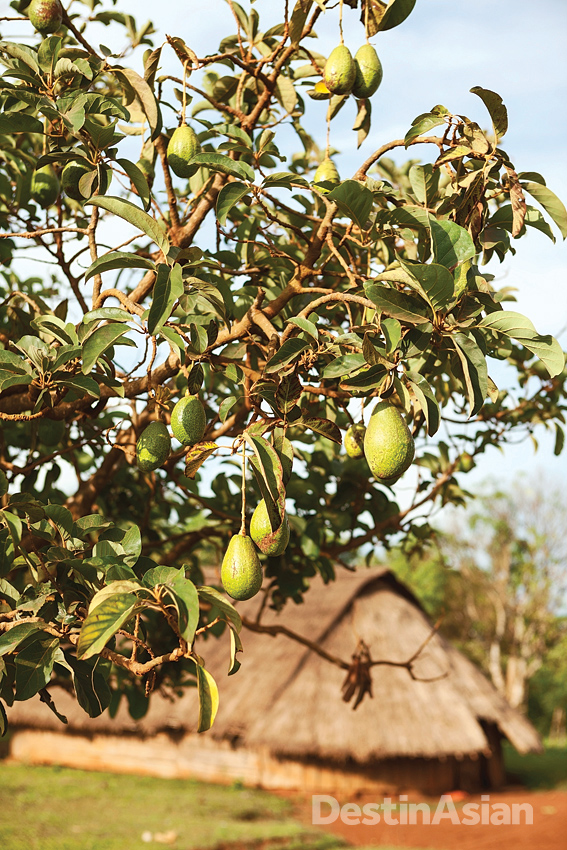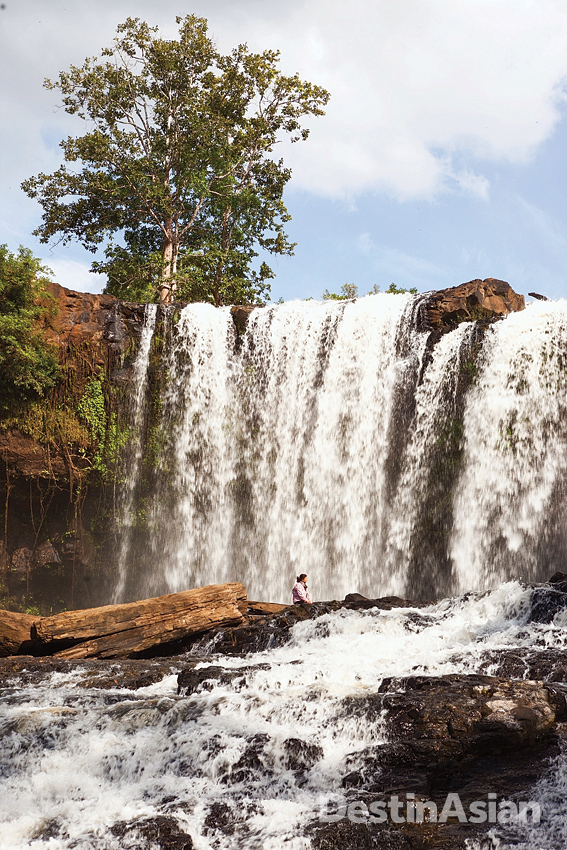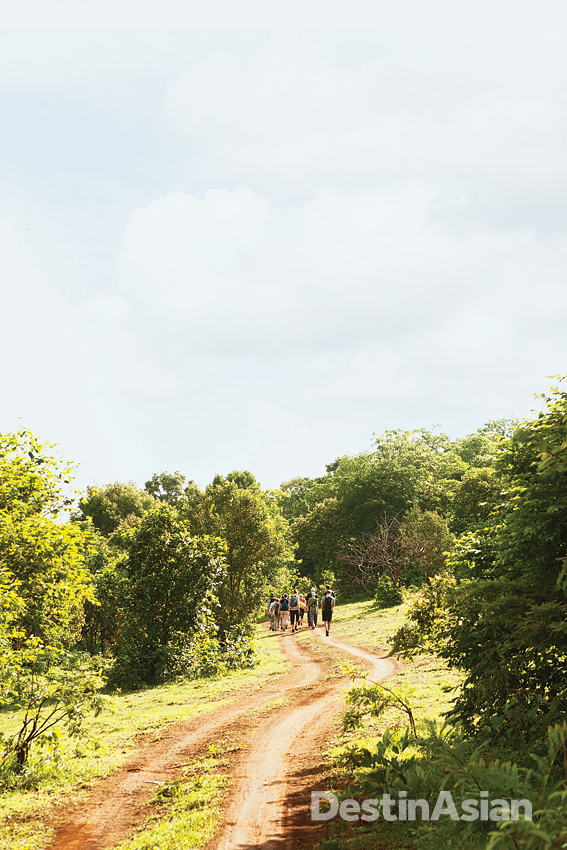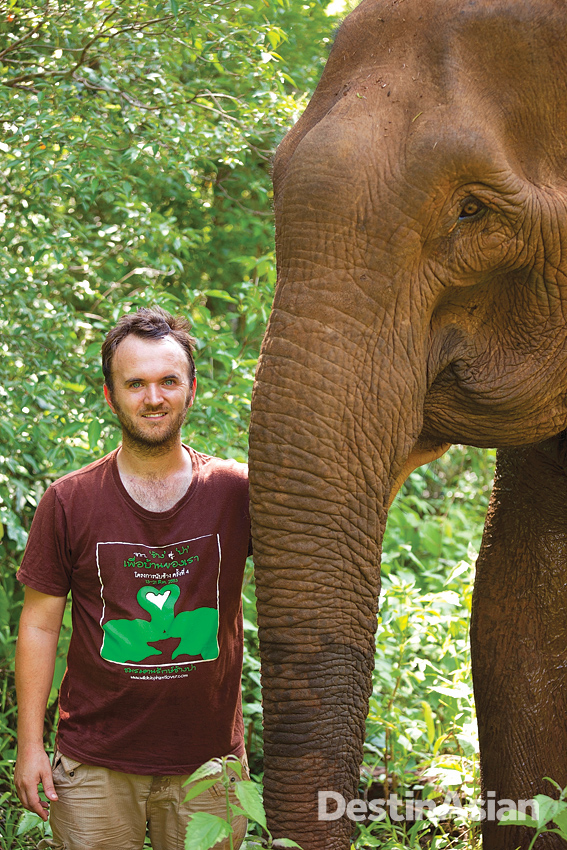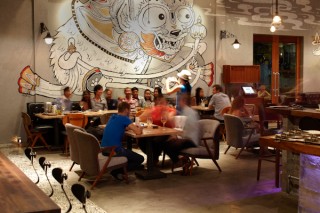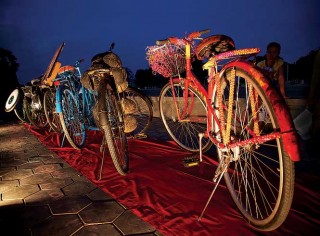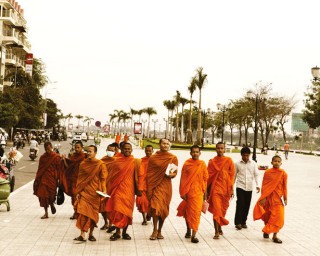Far from the crowds of Phnom Penh and Angkor, the relatively cool hinterlands of northeastern Cambodia offer visitors a glimpse of minority traditions, bucolic comforts, and forests teeming with wildlife—including most of the country’s remaining elephants
By Claire Knox
Photographs by Galilea Nin
As I peered down at heaven, a blast of cold wind kicked up a cloud of red dust and rippled through the long tufts of gold-flecked grass below the ridge. The scrubby landscape vaguely reminded me of the chilly plains of southern Australia, yet I was in the tropics—in the highlands of northeastern Cambodia, to be precise—and the scene was strangely disorienting. I even felt my teeth chatter.
About a five-hour drive from my home base of Phnom Penh, Mondulkiri—Cambodia’s largest and most sparsely populated province—is a different world entirely removed from the cacophony of the city. The journey east had taken me over the plump, milky Tonle Sap River and the wide blue waters of the Mekong. Rice paddies and clusters of palms slowly gave way to grassy plains, sprawling rubber and cassava plantations, and then thick, ravishing stretches of rain forest that keep Cambodia’s sultry heat at bay in these parts.
It was early January, and atop this blustery ridge 10 kilometers outside the tiny provincial capital of Sen Monorom, I was listening to an intriguing, mildly eccentric Englishman talking at a rapid-fire pace about elephants.
“You can tell everything by the ears,” he was saying. “If they’re pinned back, they’re concentrating. If they’re flapping about, they’re relaxed. Elephants have a language, too. The rumbles are fascinating. If it sounds like a motorbike, that means it’s calling out to another elephant. The squeals and squawks and the trumpets, those are the punctuation marks. I love studying their language.”
This elephant whisperer was Jack Highwood, 31, the founder of Mondulkiri’s Elephant Valley Project (EVP). Since 2007, the ecotourism project has welcomed visitors and volunteers to this lush, undulating 200-hectare valley to learn about the situation facing Asian elephants and watch the animals roll and scratch and slip about in muddy streams. But not to ride them: Highwood, who bears a startling resemblance to Breaking Bad’s Aaron Paul, takes a dim view of that sort of activity. “We want these animals to behave like wild elephants as much as they can,” he explained. “I can’t tell people who want to ride an elephant not to ride one, nor would I tell a mahout who feeds his family through offering tourist rides to stop. But ethically, there’s something wrong with it, and we just don’t sanction it here.”
The EVP looks after a dozen formerly captive elephants in this valley, a jigsaw puzzle of myrtle-green forests punctuated with farm plots cultivated by Bunong (a.k.a. Phnong) people, the province’s main ethnic minority. The slopes are thick with bamboo planted by volunteers over the years—a veritable elephant buffet. No wonder Highwood has dubbed this pachyderm paradise Heaven.
The EVP is part of the Elephants Livelihood Initiative Environment (ELIE), an NGO established by Highwood in 2005. Dedicated to the welfare of both captive and wild elephants, the organization runs a mobile veterinarian service and a research and monitoring setup, among other programs. Yet it’s equally passionate about assisting the local communities, whose wellbeing is inextricably linked to that of the elephants. The EVP now supports five Bunong villages, or about 500 families, with full health coverage (dengue, malaria, and motorbike accidents plague the area) and educational opportunities, all funded by a portion of visitor revenues. Additionally, it supplies jobs for the mahouts who look after the elephants, as well as rice to Bunong farmers in exchange for renting their land. “Farm patches like this would produce maybe 60 kilos of rice a year,” Highwood said. “We provide 50 kilos of rice to rent that land. That in turn frees up the farmers to work for us rather than on the farm, and make an income. It’s a really nice circle.”
All told, ELIE currently employees about 80 people, not including the military police they fund to patrol the borders of the valley and protect the animals from poachers, one of the biggest threats facing Asian elephants. In October last year, the remains of three slaught-
ered wild elephants, including a calf, were found inside Mondulkiri’s Phnom Prich Wildlife Sanctuary. But of equal concern are the swaths of habitat being lost to logging operations and plantations. According to a November 2013 report published in the journal Science by researchers at the University of Maryland, the rate of deforestation in Cambodia is among the world’s highest. Between 2000 and 2012, the country lost more than seven percent—12,600 square kilometers—of its forest cover. For the estimated 250 elephants living in the wild in Cambodia, that’s dire news.
In Heaven, however, the setting couldn’t be more luxuriant. Descending into the forest, we arrived at a stream where a round-faced, 20-year-old Bunong mahout nicknamed Norm was trying to coax his charge across the water. All long eyelashes and leathery skin, Pearl was a new addition to the valley; she had until recently been a logging elephant. Like most of the EVP’s elephants, she still bore the scars of her former life: a pronounced, disfigured spine and abscessed eyes. When she’d refused to keep working, the EVP was able to convince her owners to let her recuperate in the valley. “After beatings, when an elephant doesn’t want to work anymore, it will just give up,” Highwood explained. “So we bring them here and heal them. Some might stay indefinitely, it really depends on what sort of compensation we can negotiate with the owners and mahouts.”


